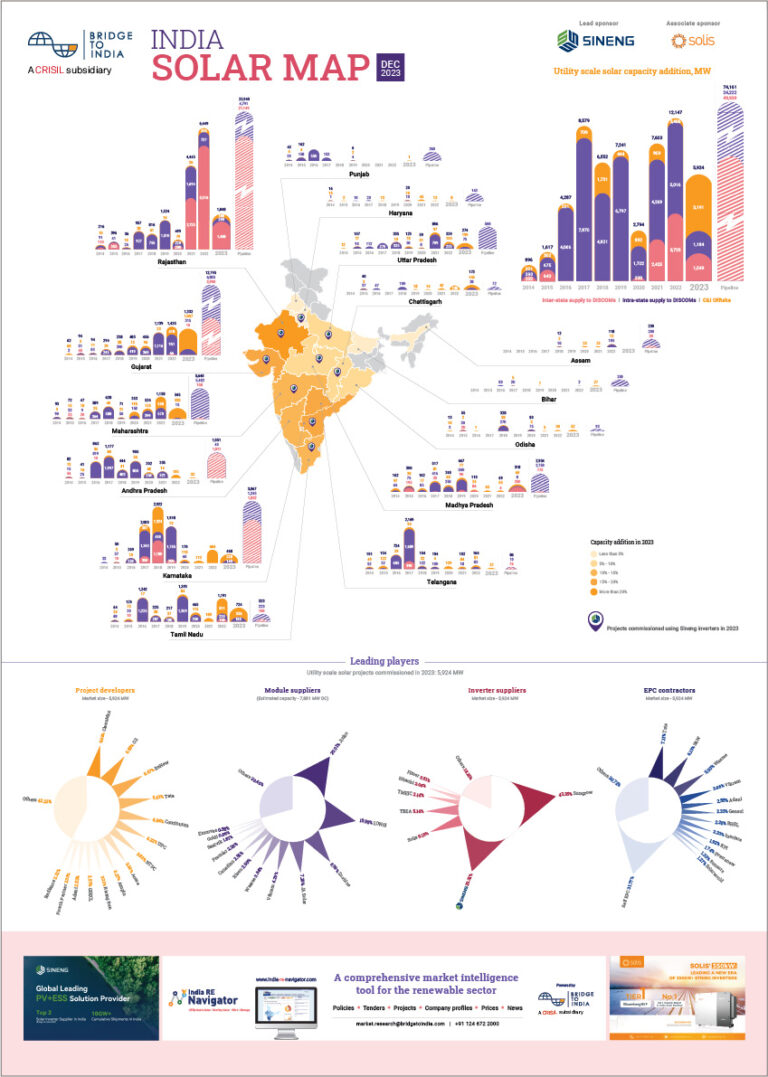In an encouraging development for renewable power, Indian states and private investors are turning their back en masse on new thermal power capacity. Energy minister of Maharashtra, the largest power consuming state, announced last week that the state will not add any new thermal power capacity. Reasons cited include increasing cost of thermal power production and pollution. The state wants to meet 25% of its power requirement from renewable resources, up from current 9%. Maharashtra’s announcement comes after two other states including Gujarat, another major power consumer, and Chhattisgarh, one of the largest coal producing states, announced retreat from new thermal power last year.
- State governments, DISCOMs, private investors and consumers are collectively turning back on thermal power;
- Share of private investment in thermal power capacity addition has fallen from 65% to almost nil in just five years;
- The Indian government needs to define a clear roadmap for phasing out new thermal power by 2024 to provide clear direction to policy makers and markets;
With most states now grappling with power surplus as well as environment and climate change related issues, more similar announcements can be expected soon. DISCOMs across the country have anyway been reluctant to sign new long-term thermal PPAs for a few years now. Private investors and power consumers are following in the same direction. Even the Indian Railways have announced a goal of attaining zero carbon emissions by 2030. The Railways are aiming to achieve 100% renewable energy adoption by building 20 GW of new renewable capacity by 2030. Meanwhile, Tata Power and JSW Energy, two of the largest private thermal IPPs, have recently declared that they do not anticipate setting up any new thermal power plants. Both companies now want to focus only on renewables for their future expansion plans. The investors are concerned about safety of their investments and do not consider long-term prospects of thermal power – increasing taxes, higher litigation risk and cost disadvantage vs renewables – as attractive.
Shifting investor preferences can be most clearly seen in the profile of new thermal power generating capacity developed each year. In just five years, share of private sector in new capacity addition has fallen from 65% to almost nil. Of the 46.6 GW of thermal power plants in various stages of construction, only 7% (3.3 GW) is being developed by private IPPs.
Figure: Share of thermal power capacity addition

Source: CEA, BRIDGE TO INDIA research
We maintain that given limited viability of other generating sources (hydro, nuclear, biomass) and non-firm nature of renewable power, thermal power will have an important role to play in India for years to come. We expect coal to account for over 50% share of total power production in the country for at least another 20 years.
Nonetheless, government-owned companies still investing so heavily in new thermal power plants is indefensible. Thermal plant PLFs are down to historic lows of around 50% and it is almost inevitable that all new plants will end up making losses in the long run. The central government is showing lack of vision in trying to expand thermal power and coal production rather than laying out a clear roadmap for phasing out new thermal power by say, 2024. Absent the government doing so, the market forces will drive the same changes but in a somewhat chaotic and expensive manner.
https://bridgetoindia.com/backend/wp-content/uploads/2020/09/gettyimages-1030966008-612×612-1.jpg||https://bridgetoindia.com/backend/wp-content/uploads/2020/09/Sep-week-1-2.png












